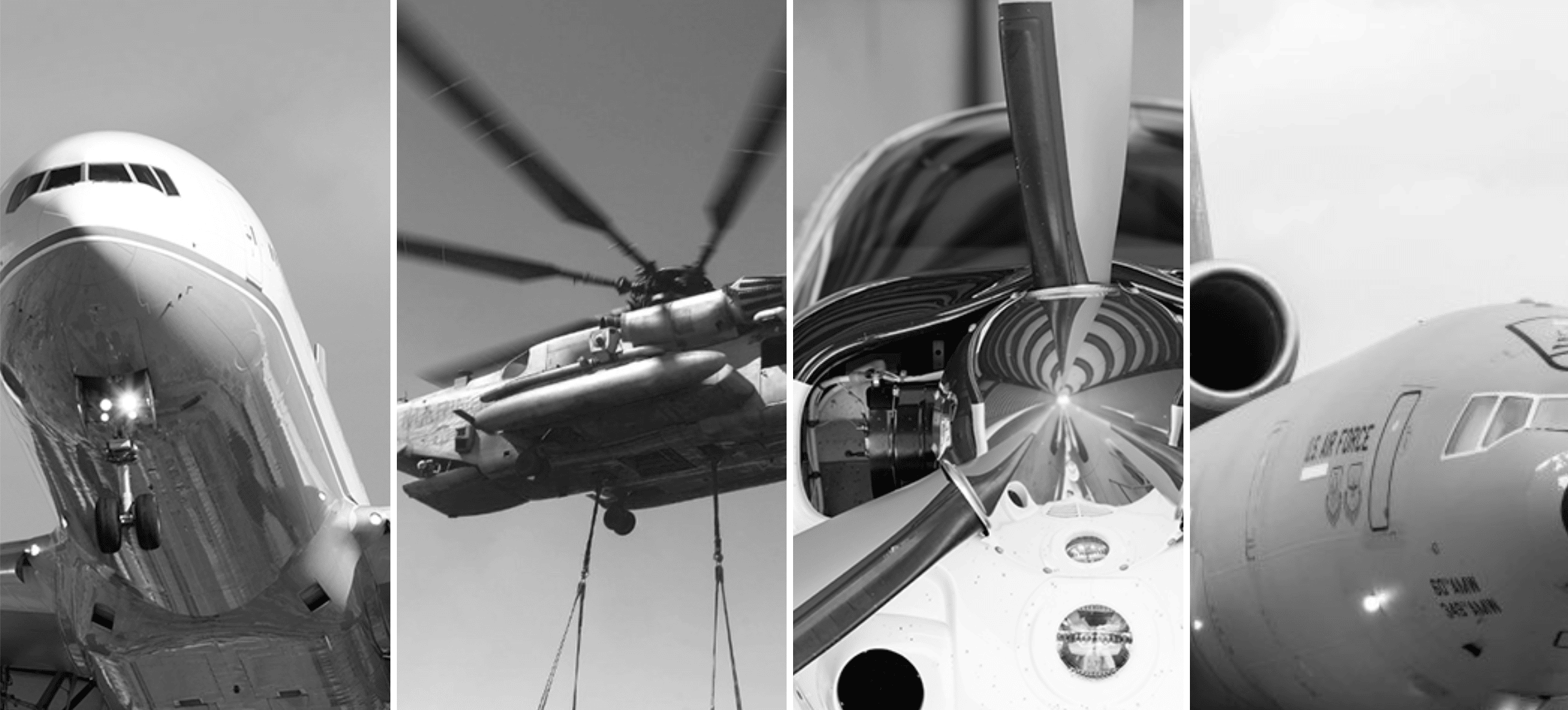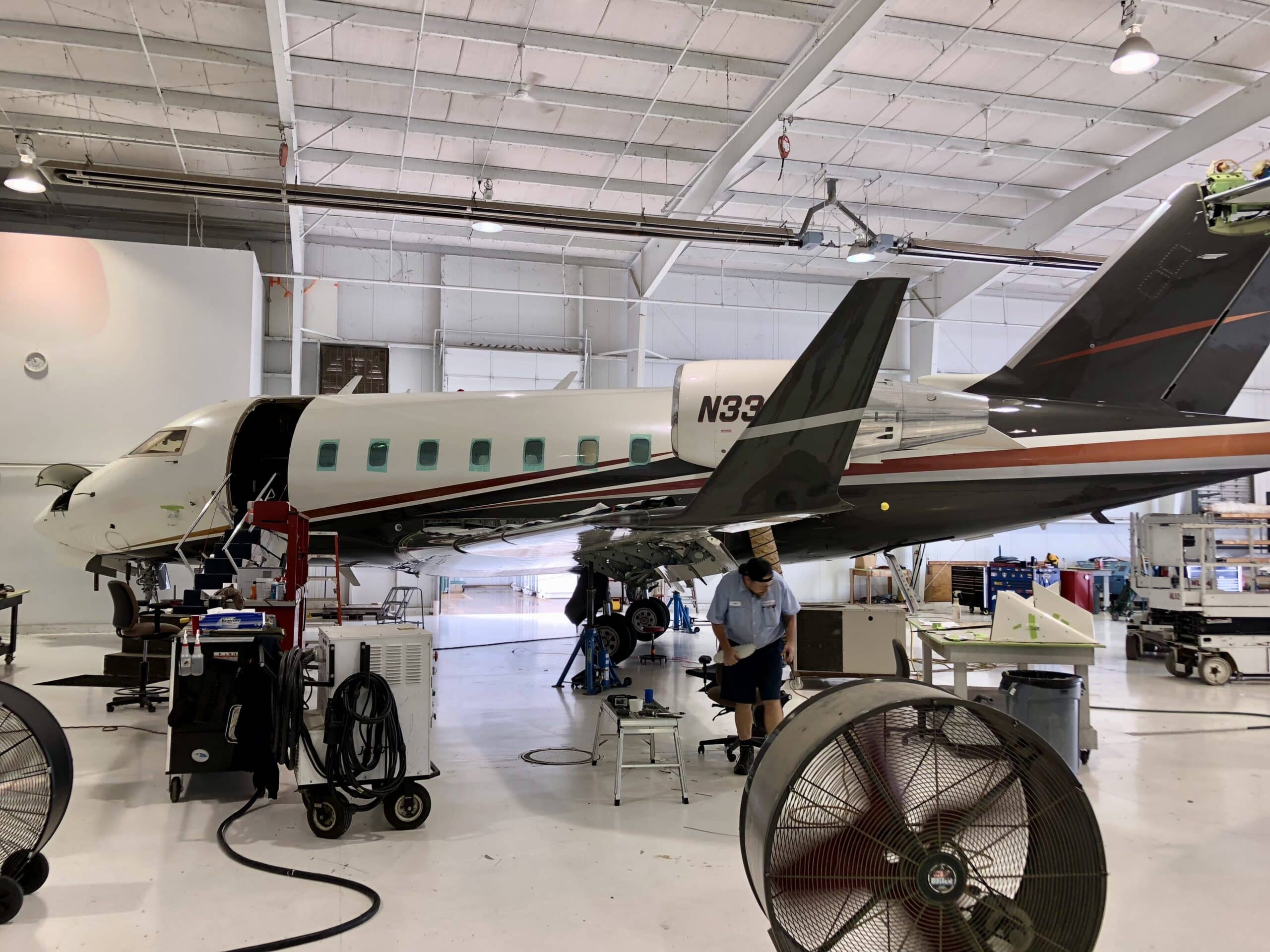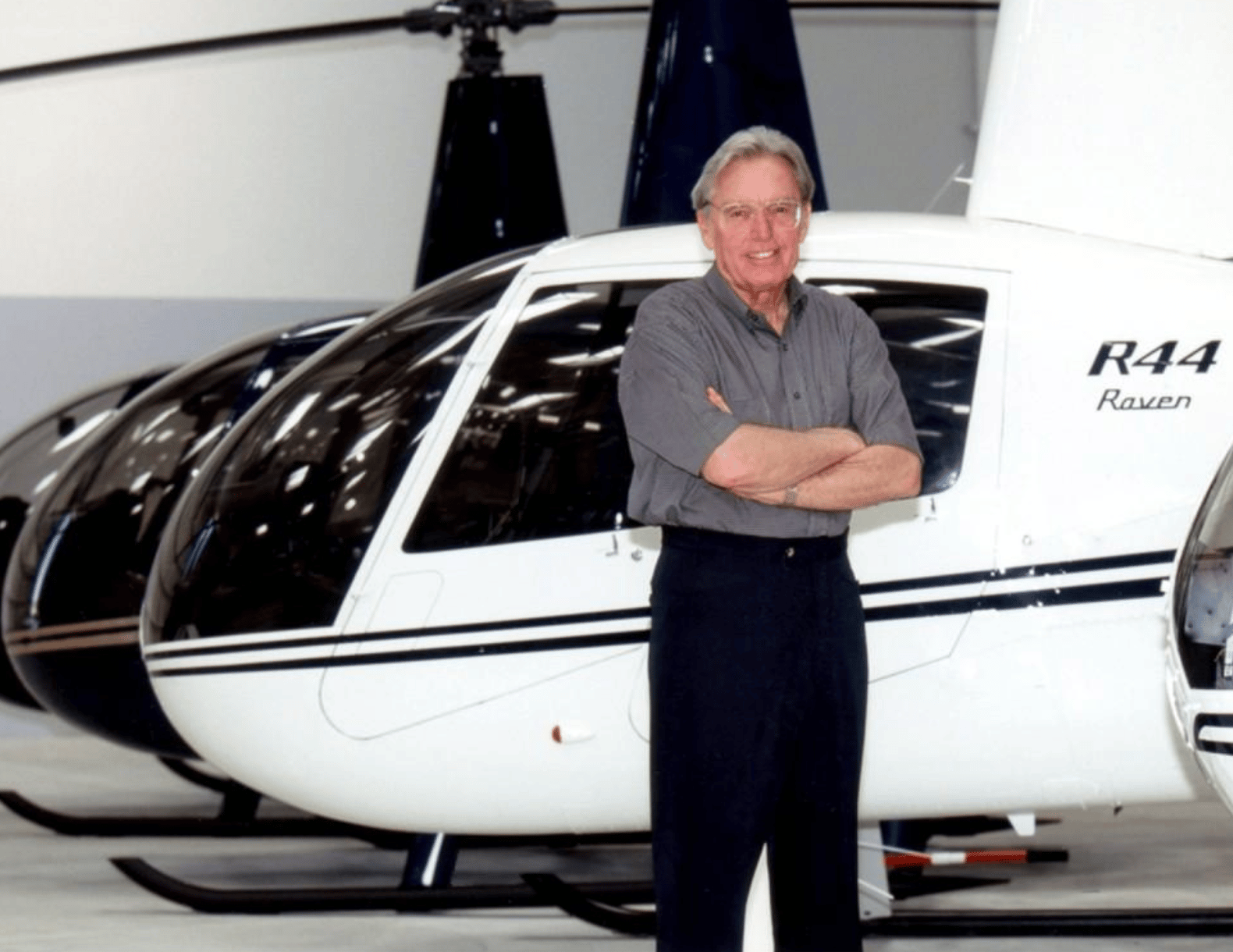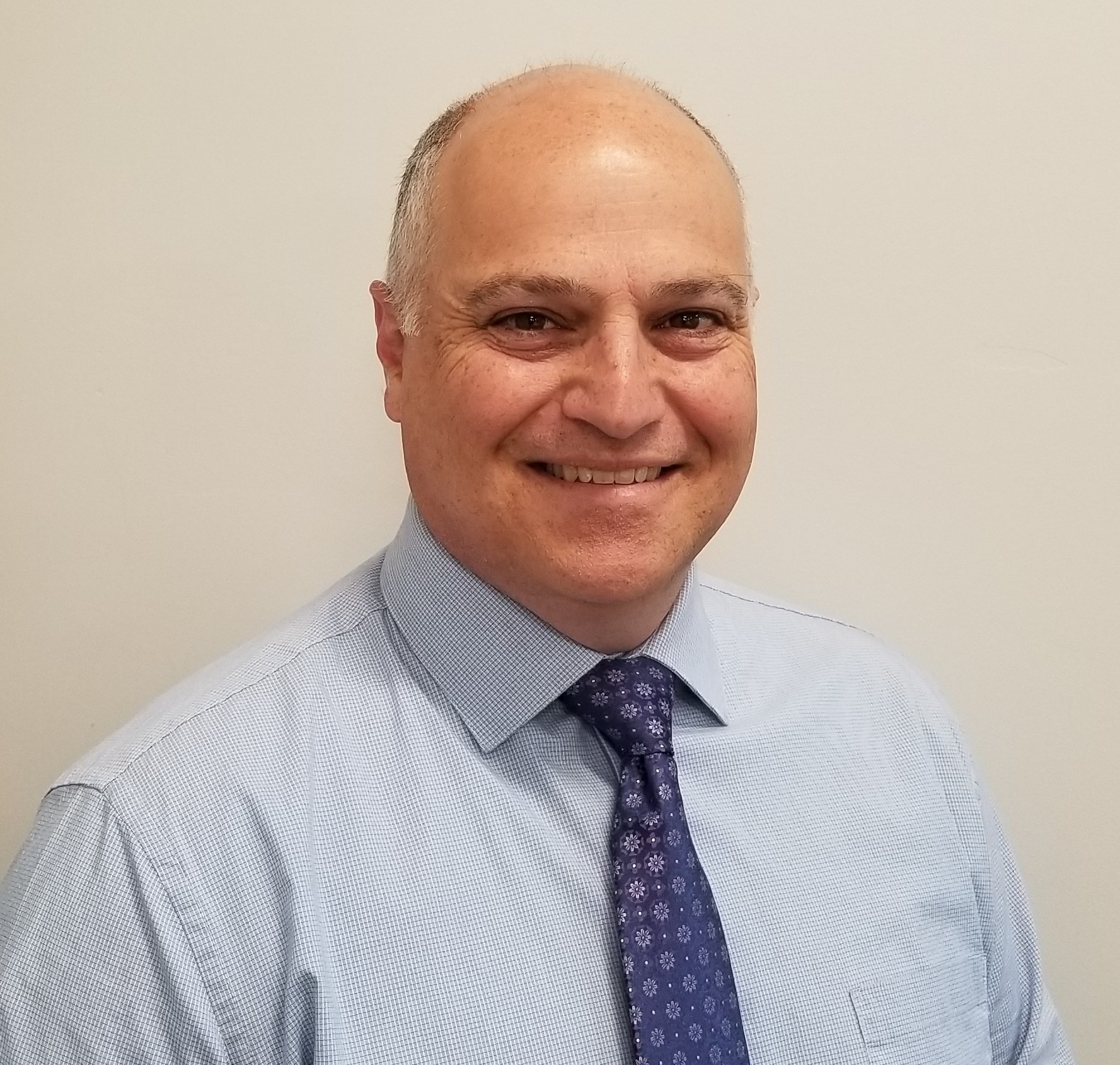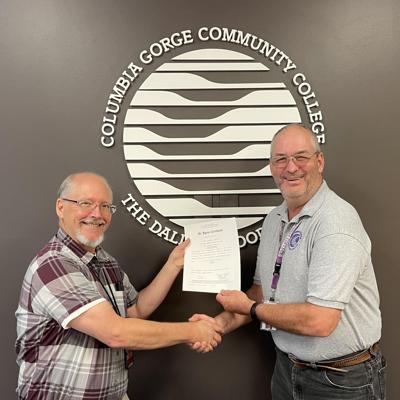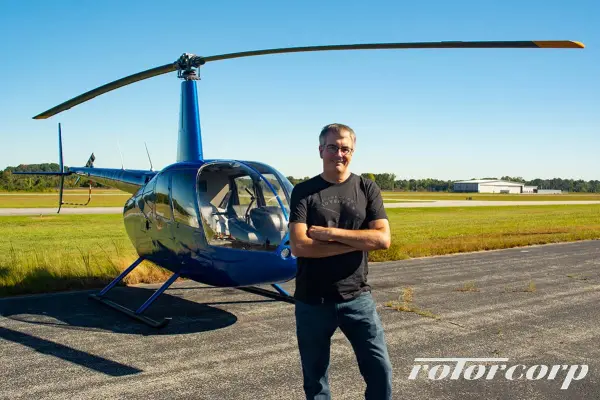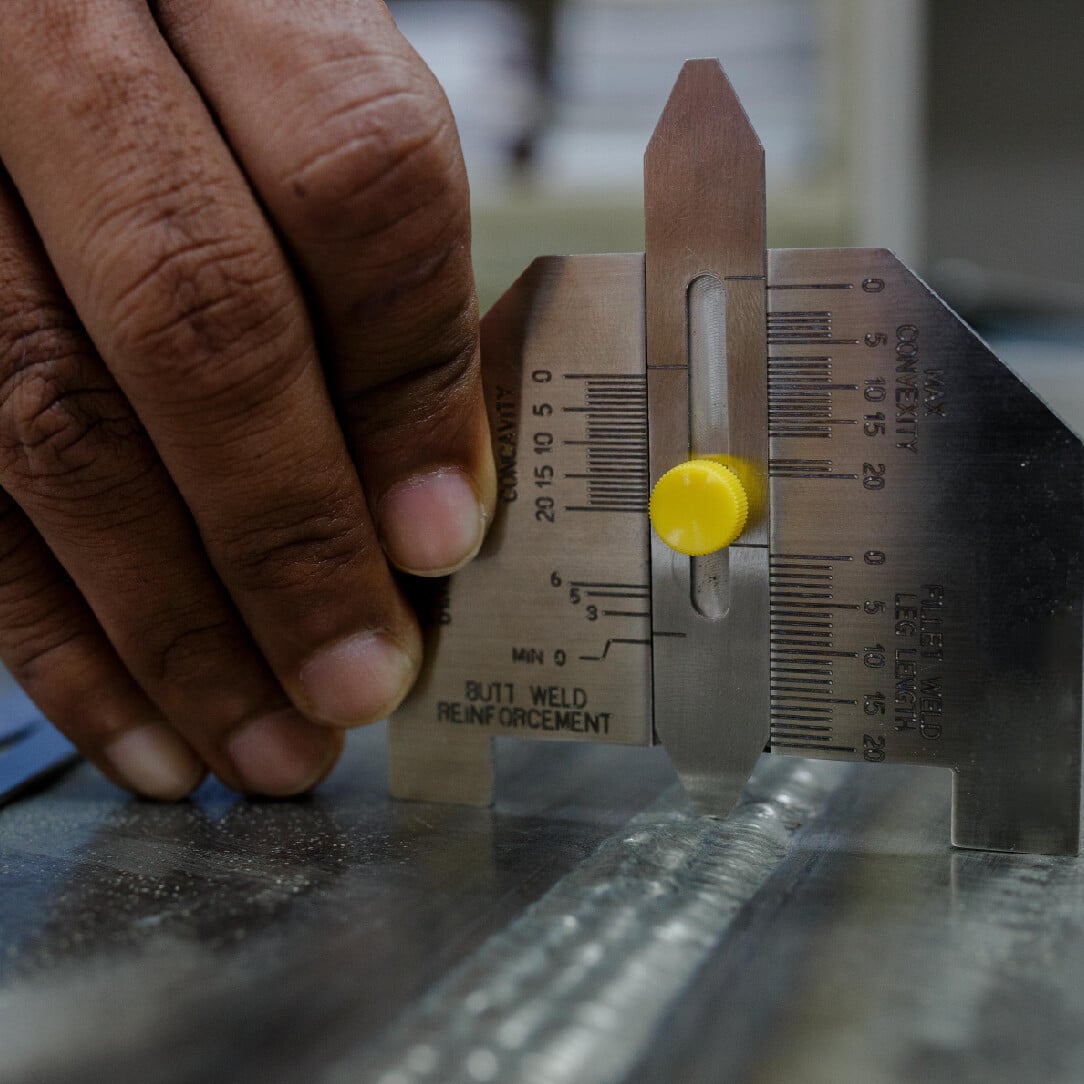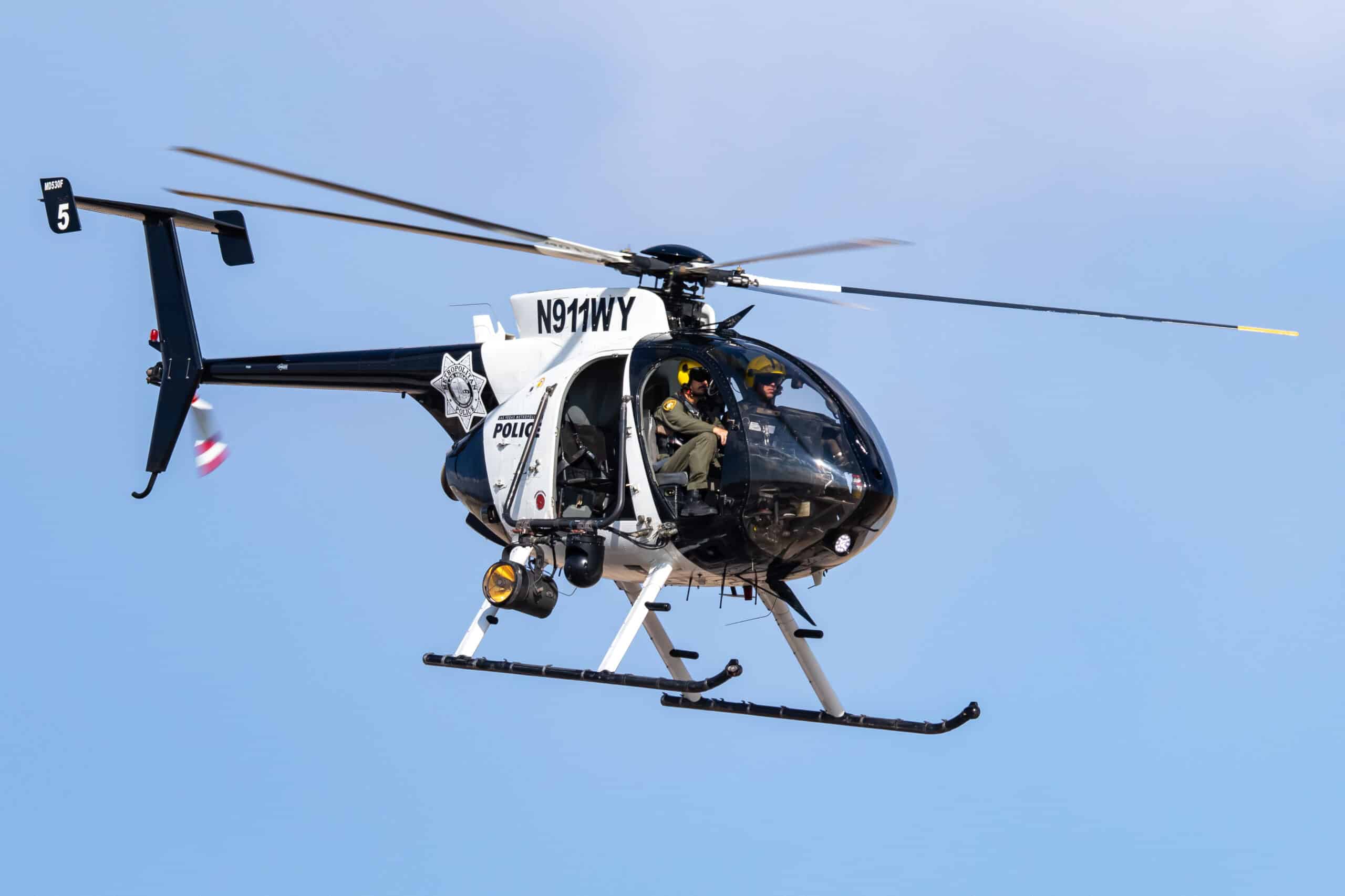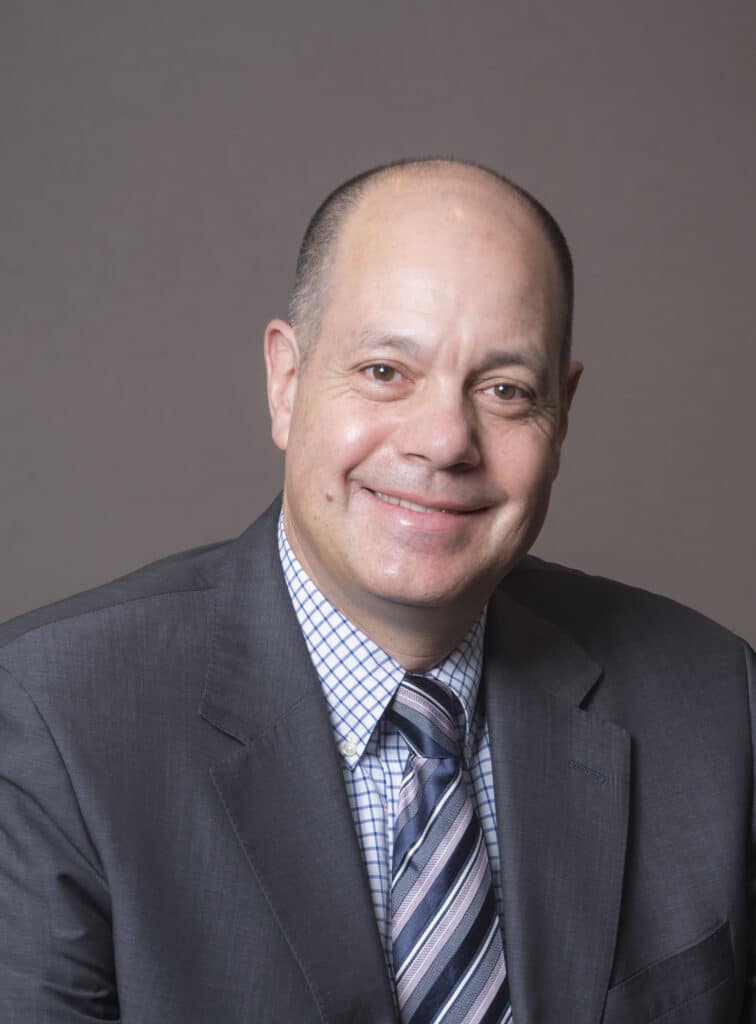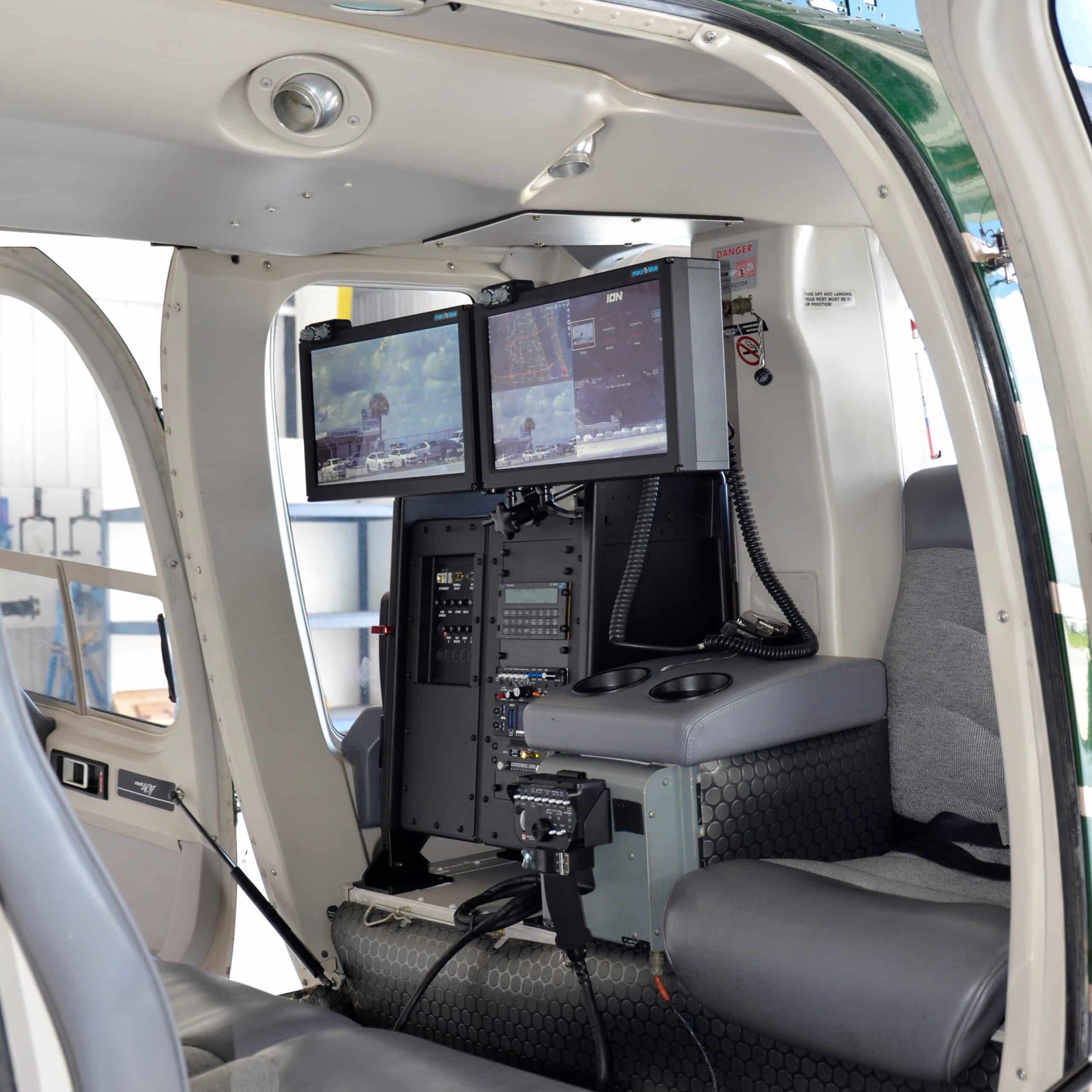As of December 5, 2022, Global Parts, Inc. (Global Parts) has merged with its corporate affiliate VSE Aviation, Inc., a Florida corporation, and has become part of the VSE Aviation, Inc. entity. The company said it will continue to operate the business with the same structure, officers, personnel, account information, quality systems, FAA and EASA certifications and policies and procedures.
Category: Rotor
GLOBAL PARTS, INC. IS NOW
New Mechanic Figures Trending in Right Direction, But Major Workforce Shortage Still Looms, ATEC Pipeline Report Finds
A healthy but expected increase in newly certificated mechanics last year did not offset momentum lost during the pandemic, leaving the new-technician pipeline at least 20 percent below the levels needed to meet rising demand across civil aviation, the latest Aviation Technical Education Council (ATEC) Pipeline Report concludes.
The latest edition of the Pipeline Report, produced annually to chart U.S. airframe and powerplant (A&P) mechanic workforce trends, found that 6,929 individuals obtained their FAA mechanic certificate in 2021—a 33 percent increase from the previous year. While the jump was the biggest in recent history, the increase left the total number of new mechanics short of 2019 levels and did not make up for the previous year’s 30 percent drop in certifications.
Considering the significant decline, ATEC estimates that the pandemic cost industry 5,000 new mechanics.
The global aviation maintenance industry was facing a shortage of certified mechanics before the pandemic, and the U.S. market was no exception. The downturn’s ramifications mean meeting demand now will be even more challenging.
“The number of prospects in the mechanic pipeline needs to grow by at least 20 percent to meet industry’s needs,” said ATEC President and WSU Tech Aviation Program Dean James Hall. “National enrollment at A&P schools is only growing at about 2 percent per year, so we have a lot of work to do.”
The council has several initiatives focused on spreading awareness and funneling more students into A&P programs. “The ATEC community is committed to getting more future mechanics into that pipeline,” said Hall. “The vast majority of the council’s planned activities for the coming year are focused on increasing awareness and removing pathway bottlenecks.”
Much of that effort is being driven through Choose Aerospace, an ATEC-backed non-profit that is deploying aviation curriculum into high schools across the country. The initiative is focused on getting students on an earlier path to mechanic certification, while building pipelines directly into A&P programs.
Other trends noted in the report:
- Repair stations hired the most new mechanics, scooping up 31 percent of all aviation-employed A&P graduates, followed by regional airlines at 17 percent. Major passenger airlines came in third, but they are the fastest growing aviation employer segment for new mechanic entrants.
- Last year, major passenger and cargo airlines combined to hire 25% of all A&P gradates, up from 15 percent in 2020. If this keeps up, it will put more pressure on sources that traditionally feed skilled technicians to large carriers–notably repair stations and regional carriers—to fill open positions.
- AMTS continue to increase their market share of mechanic production—and by extension their importance in helping industry meet demand. Last year, 67 out of every 100 new mechanics went through A&P school. The other 14 came from military and 19 from civilian work experience.
- Females make up 2.63 percent of the population, a number that is trending up, but only slightly. One positive sign is that 9 percent of all new A&P graduates last year were female.
Download the 2022 Pipeline Report & Aviation Maintenance Technician School Directory at www.atec-amt.org/pipeline-report.
TACG Has Added a New Human Factors Trainer Recurrent Course
Dr. Bob Baron and The Aviation Consulting Group announced a brand new course for Human Factors Instructors.
This Human Factors Trainer Recurrent course is appropriate for HF trainers who need refresher training (something that should typically be done every two years). Upon completion of this course, the attendee will be up-to-date on HF topics and course development/delivery methodologies.
Full course information can be viewed at https://www.tacgworldwide.com/Human-Factors/HF-Trainer-Recurrent.
Helicopter Pioneer Frank Robinson Has Died
On November 12, 2022 Robinson Helicopter Company bid a final farewell to its founder, Frank Robinson. Robinson, 92, passed away peacefully at his Rolling Hills, California home.
One of the most recognizable names in the helicopter industry, Frank Robinson was a pioneer, not driven by reward or accolades but by a vision that redefined the industry and changed general aviation.
Robinson will be remembered for the design and manufacture of the R22, R44, and R66 model helicopters. Known for their simplicity and reliability, the popular helicopters have a distinct profile and can be spotted easily and frequently all over the world.
Robinson’s fascination with helicopters began in 1939, at age nine, when he saw a picture in the Seattle Post-Intelligencer of Igor Sikorsky hovering his VS-300 helicopter, an image that captivated Robinson and set the course for his life’s work.
He earned a BSME degree from the University of Washington, later attending Wichita State University’s graduate aeronautical engineering school. His career began in the late ‘50s with Cessna and continued through the ‘60s working for many leading aerospace companies, including Bell and Hughes. In 1973, at age forty-three, unable to interest any of his employers in the idea for a simple, personal helicopter, he resigned from his job at Hughes and founded Robinson Helicopter Company in his Palos Verdes, California home. Six years later, defying critics and overcoming enormous obstacles, Robinson was granted FAA certification for his two-place, piston powered R22 helicopter. The unknown helicopter company delivered its first production R22 in October 1979. By 1989, the R22 had gained a foothold in general aviation, opening a previously untapped market for private helicopter ownership.
In the early ‘90s, realizing the potential for a light mid-size helicopter, Robinson introduced the four-place piston powered R44. Orders for the R44 quickly piled-up and the company became a recognized player in the aviation industry. In 2010, Robinson once again expanded his line with the five-place, turbine powered R66.
Robinson’s relentless determination earned him the respect of both colleagues and competitors. Affectionately called a rock star in certain aviation circles, Robinson retired in 2010 at age 80.
The list of awards and honors bestowed on Robinson is long. Most notable:
2013 Daniel Guggenheim Medal – AHS International
2011 Lifetime Aviation Engineering Award – Living Legends of Aviation
2010 Cierve Lecturer – Royal Aeronautical Society
2011 Inducted into the U.S. National Academy of Engineering
2004 Howard Hughes Memorial Award – So. California Aeronautic Association
2000 Named Laurels Hall of Fame Legend – Aviation Week & Space Technology
1997 The Doolittle Award – Society of Experimental Test Pilots
1992 Laurels Award – Aviation Week & Space Technology
1991 & 1990 Igor I. Sikorsky International Trophy – American Helicopter Society
Today, the company continues under the leadership of Frank’s son, Kurt Robinson and, to date, has delivered over 13,000 helicopters worldwide.
Michael Damiana Joins MicroCare; Will Lead Global Sourcing Efforts
MicroCare announced that Michael Damiana has been appointed the director of Global Supply Chain for MicroCare. Damiana comes to MicroCare with more than 20 years of experience in sourcing and supply chain management.
In his new role, Damiana will drive operational excellence by developing and executing a company-wide strategy focused on procuring services, raw materials and finished good supplies to ensure adequacy of manufacturing process and timely customer response on a global scale.
“We’re very excited to have Mike on the MicroCare team,” announced John Stardellis, MicroCare chief financial officer. “MicroCare is growing globally and Mike is going to be focused on integrating our supply chain with our four logistics centers and our evolving production needs.”
Prior to MicroCare, Damiana held senior sourcing management positions at Ikonisys, Medtronic, Hobson & Motzer, and most recently as Procurement and Lean Programs manager at Okay Industries.
He holds a Bachelor of Arts Degree in Biological Sciences from Central Connecticut State University and is PMP (Project Management Professional) certified.
“I’m ready for new challenges and new opportunities,” Damiana said. “I’m really looking forward to making significant contributions to the MicroCare team as the company adds new products, new customers and reaches into new industries.”
Aviation Maintenance Training Offered in Gorge
By Dan Spatz Columbia Gorge Community College
Columbia Gorge Community College is home to America’s newest aviation maintenance technician training program upon official recognition this month by the Federal Aviation Administration. (FAA)
The achievement follows nearly four years of research and development as the college worked with industry partners and the FAA to validate job demand for aviation technicians, then developed a curriculum to meet the rigorous technical requirements of “Part 147 Airframe & Powerplant” training.
Students graduating from the program will be prepared for their FAA licensing test as aviation maintenance technicians. Licensure will allow them to maintain fixed-wing aircraft — jets as well as prop planes — and helicopters across the Pacific Northwest or anywhere in the United States.
America’s aviation industry faces an estimated shortage of 79,000 maintenance technicians by the year 2039, according to a 2020 estimate by the Aviation Technician Aviation Council (ATEC). The global aviation industry will need 626,000 technicians over the next 20 years, according to a 2021 projection by Boeing. Existing training programs do not have the capacity to meet that demand, ATEC determined. Demand is driven by growth of civil aviation and an aging workforce.
“This approval by the FAA marks an historic milestone in our college’s history,” said Dr. Marta Cronin, CGCC’s president. “Our goal is to make CGCC a destination institution. Given the vast, unmet need for aviation technicians and the family-wage salaries offered by these careers, we are pleased to be part of the national network of community colleges providing this vital training.”
Cronin cited encouragement from FAA training officials in Portland, industry partners such as Horizon Air, and other colleges as CGCC developed the program. For instance, faculty at Lane Community College provided guidance and site tours of their extensive program in Eugene.
As a new program, CGCC’s Aviation Maintenance Technician training is designed to comply with a recent Congressionally-mandated reform of aviation technician training. The 18-month program comprises 104 credit hours of instruction in 45 subject areas. Students emerge with an associate of arts and science degree, together with airframe and powerplant certificates required to qualify for FAA testing to become licensed aviation mechanics.
Students learn equipment operation, maintenance and trouble-shooting in such varied topics as navigation and communication equipment, oxygen, pressurization, heating, ice and rain protection systems, fuel control, hydraulics, welding and sheet metal fabrication, wood and composite structures, piston and turbine engines, and maintenance record-keeping. Most is hands-on experience.
Enrollment in Airframe and Powerplant pre-requisite instruction is available for the 2022-23 academic year. CGCC joins “A&P” programs offered by Lane and Portland community colleges in Oregon; the closest community college programs in Washington State are in Puyallup, Moses Lake and Spokane.
“I am grateful for CGCC’s dedicated career-tech faculty team and the unwavering support of the local and regional aviation community,” said lead instructor Bryan Despain, who brings three decades of experience with Delta Airlines to the college. Despain designed the curriculum and was instrumental in obtaining equipment for the training lab. “CGCC and I are excited to embark on this wonderful adventure in offering aviation maintenance as part of our suite of certificates and associate degree programs.”
Civil aviation continues to expand in the United States, with more than 5,000 general aviation airports operating and hundreds of thousands of aircraft, according to the FAA.
“The aviation maintenance technician role continues to evolve as new generation airplanes become more prevalent in the global fleet,” Boeing noted in its 2021 annual industry assessment. “With the increasing use of sensors and flight data recorders, the global commercial fleet could generate over 100 million terabytes of data annually by end of the decade. This could enable new predictive solutions, which would drive a need for technicians who can accurately analyze, interpret and act on the information generated. Older aircraft remain in service, which will require technicians with a wide set of skills to maintain aircraft that were built decades ago.”
“We are thrilled to welcome this new program to the aviation mechanic education community,” said Crystal Maguire, executive director of the Aviation Technician Education Council, which is based in Oklahoma. “CGCC will play a vital role in the Northwest, creating sorely needed talent to support industry’s projected growth. Planes cannot fly without maintenance technicians, and those with the requisite skills and certification are and will continue to be in high demand.”
Since embarking upon this new program, the college reached several preliminary milestones: Two aircraft have been donated, and the college secured temporary, leased warehouse space at Port of The Dalles. It has a draft lease with Columbia Gorge Regional Airport, where funding is pending from the U.S. Economic Development Administration to construct a dedicated training hangar and expand the airport industrial park. (The airport is jointly owned by City of The Dalles and Klickitat County, both of which are providing matching funds for the $3.5 million EDA grant.)
In 2021 the college and Horizon Air approved a memorandum of understanding establishing CGCC as an official training partner of Horizon Air. As part of this, students enrolled in the CGCC program are eligible to participate in the “Horizon Technician Development Program,” which provides qualified students with a stipend to complete training in exchange for committing to employment with Horizon for a two-year, six-month period.
This past June the college received aviation maintenance program approval from its accrediting authority, the Northwest Commission on Colleges and Universities.
Students enrolled in the aviation maintenance program as well as other career-tech and general education programs at CGCC may also choose on-campus student housing. Because of the region’s shortage of affordable housing options, the college opened a student residence hall with on-campus meals plan in September 2021, at the same time it opened its Columbia Gorge Regional Skills Center.
Rotorcorp Names Bill Sengstacken as Vice President of Marketing
Rotorcorp, an Authorized Robinson Helicopter Company service center recently announced that they have named B2B marketing veteran, Bill Sengstacken, as vice president of Marketing. Serving more than 1500 customers in 45 countries worldwide, Rotorcorp is the largest seller of parts, overhaul kits, engines and major components for Robinson helicopters. In his new leadership role, Sengstacken will develop and execute Rotorcorp’s overall marketing strategy with the aim to build Rotorcorp’s brand recognition and increase online revenues.
“No matter if the person looking to buy Robinson Helicopter parts is shopping for themselves or for a fleet of helicopters, it is clear that our customers want a better online shopping experience,” said Sean Casey, president of Rotorcorp. “We’ve all shopped online and know when a shopping experience is good or bad. While Rotorcorp maintains the only e-commerce website focused on Robinson Helicopter parts, we’re looking to Bill to both provide a more intuitive way to buy Robinson helicopter parts and overhaul kits. We also want to give people a reason to keep Rotorcorp.com bookmarked in their browser and to come back for parts as well as insights and expertise we intend to share.”
Sengstacken brings more than 20 years of branding and B2B marketing expertise to Rotorcorp with branding and marketing leadership roles at JBoss, Red Hat, Lancope, and Terracotta. He plans to build recognition of the Rotorcorp and to position the company to be seen as more than just a tools and parts supplier for Robinson Helicopters and Fleets. He says that the key to this will be by building better connections that resonate with the customer.
“Having parts for the R22, R44, and R66 in stock to buy and ship today is the easy part,” Sengstacken explains. “Rotorcorp needs to give a reason for our customers to stick around and come back for a consistent repeatable experience. We need to make smart investments if we want potential buyers of Robinson parts and tools to visit our Robinson Helicopter parts store.”
“Rotorcorp’s current customers are loyal because they know they can trust us to deliver both the parts and the know-how they need to keep flying. A big reason why I took on this role was because of Rotorcorp’s expertise and knowledge of Robinson Helicopters. By sharing that knowledge on Rotorcorp.com and beyond, we can help the people who work to keep Robinson Helicopters flying, and give them a reason to come back for more.”
While Rotorcorp’s track record supplying Robinson helicopter parts to customers is well established, the company sees eCommerce and online sales of parts, tools, overhaul kits and components to be critical to its growth.
“It’s not unusual for a customer to be on our website looking to buy an overhaul kit for an R44 that’s about to hit the 2200 hour mark to give me a call,” Rotorcorp VP of Operations Tracy Jensen commented. “In my nearly 10 years at Rotorcorp, customers tell me that they keep coming back because they know Robinson Helicopters and compatible engines are our focus. I can’t wait to see Bill take our ‘insider knowledge’ and share it with those searching for help with an engine overhaul or to be sure that they are getting everything they need to service their helicopters.”
CWIs/SCWIs Can Get Certification Endorsement to Perform Welding Procedure Qualifications
The American Welding Society (AWS) has introduced the Welding Procedure Qualifier Endorsement, developed for existing Certified Welding Inspectors (CWI) and Senior Certified Welding Inspectors (SCWI) who want to conduct Welding Procedure Specification (WPS) qualifications. .
The WPS is a key component to ensuring weld quality; its qualifying process is a complex mixture of engineering, metallurgy, welding capability, and inspection. When a problem exists in any of these areas, the result can be failure of the weld to meet specified service conditions. To meet code requirement, the WPS must be properly qualified by a relevant engineering authority.
While Certified Welding Inspectors have a fundamental knowledge of WPS qualification,” commented Denny Smith, managing director of Certification, “they require further training and assessment. CWIs or SCWIs who hold the Welding Procedure Qualifier Endorsement have demonstrated that they are able to qualify WPSs with appropriate engineering oversight.”
Prior to sitting for the endorsement exam, candidates are encouraged to participate in either an in-person or online training seminar; 16 hours of instruction provided in two and four days, respectively. “The Welding Procedure Qualifier Endorsement Seminar covers activities related to the qualification of Welding Procedure Specifications (WPS)” Alicia Garcia, Director of Education, stated. “Participants will learn how to assess project requirements, demonstrate knowledge of process variables and relevant documents, evaluate mechanical and nondestructive testing for procedure qualification purposes, prepare a PQR, establish ranges for prequalified WPSs, and list ranges for WPS qualified by testing.”
The group says CWIs and SCWIs who hold the Welding Procedure Qualifier Endorsement will better be able to:
- Differentiate between codes, standards, specifications, and other documents commonly used in a welding environment
- Evaluate the various documents reviewed by the welding inspector prior to fabrication
- Discuss the role of the welding inspector
- Examine the role of procedure qualification records in the welding process
- Assess control of materials and explain the importance of material control in meeting standards or specifications for production
- Analyze alloy identification and material specification within welding inspector responsibilities
- Navigate and identify pertinent information in the AWS D1.1 and B2.1 codebooks
- Apply the necessary documents for a particular procedure qualification.
- Explain the process of procedure qualification
- Develop welding procedure specifications using real world examples
- Analyze prequalified WPS’ and understand how they are developed
- Analyze how Standard Welding Procedure Specifications are developed, qualified, and used
CWIs seeking to take their career to the next level and become a SCWI, can use this all-new endorsement to help reach their goal. Their added skillset will also contribute to their company’s QA program.
MD Helicopters Announces New Ownership and Leadership
MD Helicopters (MDH) announced new ownership and leadership. An investment consortium led by MBIA Insurance Corp., Bardin Hill, and MB Global Partners has acquired the company and established new leadership.
Brad Pedersen will lead the team as MD Helicopters’ President and CEO. Brad brings over 35 years of aerospace experience delivering accelerated growth and financial performance in leadership positions at Boeing Rotorcraft, Sikorsky Aircraft, Breeze-Eastern, and other aerospace and defense companies. Pedersen started his career at Hughes Helicopters and has almost 20 years of Engineering and Leadership experience with the MD Helicopter product lines. Brad has also led the turnaround of several private and publicly owned companies making him the ideal choice to lead MD.
“MD Helicopters has been an iconic name in the rotorcraft industry, and we will build on this rich heritage to serve and support our customers worldwide,” said Pedersen. “Our immediate focus is to dramatically improve customer support, foster strong supplier relationships, and implement an aggressive aircraft sales plan.”
Pedersen will be supported by a highly experienced board of directors comprised of aerospace & defense executives and significant financial expertise:
Edward Dolanski, chairman of the board: Fortune 50 business executive with 30+ years of experience leading organizations through performance turnarounds and into sustained growth. Dolanski’s experience includes president, Boeing Government Services, president & CEO Aviall (a Boeing company), and vice president, Raytheon Aircraft Company (Hawker Beechcraft Customer Support / Aftermarket).
GEN (ret.) Gustave Perna, board member (chair, governance & compliance committee): served as chief operating officer for Operation Warp Speed, in which he co-led the partnership of government, academia, and industry to successfully accelerate the development, manufacturing, and distribution of COVID-19 vaccines and therapeutics for the Nation. As Commander of U.S. Army Materiel Command (AMC), one of the Army’s largest commands with over 190,000 military, civilian and contractor employees, he was responsible for installations, logistics, sustainment, and materiel readiness around the world.
Paul “Flip” Huffard, board member (chair, audit committee): 30+ year restructuring veteran with extensive financial management experience including as senior managing director at Blackstone’s Restructuring and Reorganization Group.
Anthony McKiernan, board member: chairman and chief financial officer of MBIA Insurance Corp.
Daniel Avitabile, board member: president and chief risk officer of MBIA Corp.
John Greene, board member: partner and portfolio manager at Bardin Hill Investment Partners
Southeast Aerospace Receives STC for Bell 407 Operator Station
Southeast Aerospace, Inc. (SEA), has received Federal Aviation Administration (FAA) Supplemental Type Certification (STC) number SR04546AT for the installation of their SEA special mission operator station in the Bell 407 helicopter.
Southeast Aerospace designed and manufactured the operator station as an ideal mounting solution for housing mission equipment in the Bell 407 helicopter to support Airborne Law Enforcement (ALE) missions. Obtaining STC certification for the operator station provides a seamless path to meeting the regulatory and safety requirements of an FAA-approved installation in the Bell 407, mitigating additional costs or requirements for both the customer and installation facility.
The operator station was designed to support the Tactical Flight Officer’s (TFO) mission as a primary focus. Dual monitors provide an extended viewing area for mission sensor and mapping data, and the operator station cabinet offers ample space for housing a fully integrated mission suite of their choosing.
The operator station cabinet provides mounting provisions for electrical equipment such as video monitors, communication control panels, and recording equipment to be installed by the end-user. The mission panel includes provisions for DZUS mounted equipment as well as a dedicated panel for circuit breakers, switches, and maintenance ports. In addition, it is equipped with a fold-down keyboard tray, installed on the left side of the operator station, which can be securely folded up and stowed with a quarter-turn latch for taxi, takeoff, and landing operations.
The standard configuration provides provisions for two Macro-Blue MB15W 15” tactical displays. The two identical monitor frames are independently adjustable. In addition, each monitor pivots at the center of the assembly allowing the monitors to be independently rotated towards the operator, up to a maximum of 20°. Once adjusted, the monitor can be locked in any position within the range of motion. The monitor mount assembly also features a tilting function controlled through a knob below the monitors, giving the monitor mount assembly a tilt of up to 25° to customize the TFO’s viewing angle.
The SEA operator station replaces the left-side aft-facing passenger seat in the Bell 407, maintaining three aft cabin passenger seats. The existing left-side aft-facing passenger seat is removed and replaced as part of the modification.
No changes to the rotorcraft interior are required as the operator assembly poses no interference with the existing interior design. Permanent modifications are negligible during this installation so the aircraft can be returned to its original configuration if desired. The operator station was also designed to utilize an integrated electrical disconnect panel allowing for quick and easy removal of the entire cabinet for maintenance and inspections.
“With a dedication to local, state, and federal law enforcement agencies, SEA is proud to announce STC certification for the latest addition to our special mission product line, the Bell 407 operator station. We worked closely with some of the finest TFOs and our engineering team to design a comfortable, effective, and practical operator workstation. By having certified options, we can help agencies access high-quality products while still working with their local avionics’ modification team. We look forward to providing more options to the ALE community as we continue to develop and certify additional products,” stated Nathan Hernandez, business development manager.
